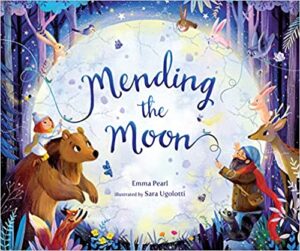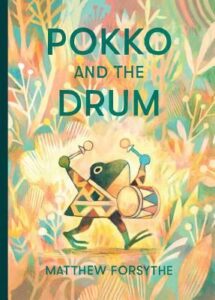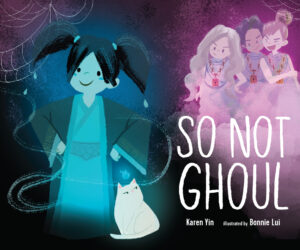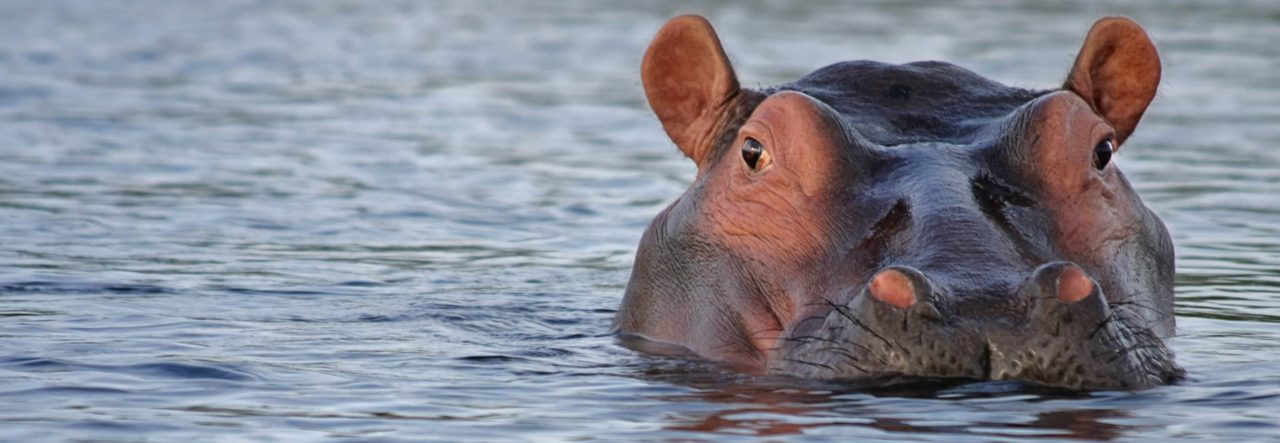 The October Industry Insider at OPB is…Page Street Senior Editor Kayla Tostevin! While I generally create my own bios for interview guests, I ran across this bio for her at various SCBWI faculty bio pages, and it’s so terrific that I’m just including it in full.
The October Industry Insider at OPB is…Page Street Senior Editor Kayla Tostevin! While I generally create my own bios for interview guests, I ran across this bio for her at various SCBWI faculty bio pages, and it’s so terrific that I’m just including it in full.
“When not poring over books (and sometimes while poring over books), she likes to be outside: hiking, biking, on a boat, or wandering aimlessly and smiling at animals. She hails from one end of the longest US freeway I‑90 (Seattle, WA) and now lives at the other in Boston, MA.”
Kayla got on my radar because she’s acquired books from literary agents who’ve joined us here at OPB, such as:
- Wendi Gu (read her OPB interview right here)
- Kaitlyn Sanchez (read her OPB interview right here)
- Mary Cummings (read her OPB interview right here)
- Joyce Sweeney (OPB interview forthcoming)
What I’ve found is that good people tend to gravitate toward other good people, so that pretty much explains the connections above.
And speaking of good people, let’s learn a bit more about our new good friend, Kayla, by getting to that interview.
RVC: Between the bio above and your Twitter bio (which has the line “happiest while adventuring”), I’m really curious—what type of childhood did you have?
KT: I’m very lucky to have grown up with four fantastic parents (my step-parents both came into the picture when I was quite young), shifting back and forth between my two sides of family every few days. I think having that constant movement and two wonderfully different home environments—generally spending a lot of time running around outside with neighbor kids and hiking with family at one house, falling in love with movies and playing lots of card and video games together at the other—has probably greatly influenced my restlessness and curiosity/enthusiasm for a wide variety of things even today. I’m so grateful for all I was able to experience during childhood and all the adventures I’m continuing to have as an adult!
RVC: At what point did you know you were going to work in publishing?
KT: I’ve loved books my whole life and suspected I wanted to work with them as early as middle school—but I originally wanted to be a writer, so I went for a writing, literature, and publishing major in college. After spending some time around other students on the same track and taking several classes, I realized I was better suited to the publishing part than the writing part!
RVC: You started at Page Street in the marketing area. What kind of advantage does that give you now as an editor?
KT: I think it really helps to have a better view of the entire process of bookmaking—and in this case, that very much includes what comes both before and after the book is made. When I’m looking at submissions for potential acquisition, I’m careful to consider not just if it’s a great story, but if it actually has some strong selling points, and my marketing experience definitely has made me stronger at pinpointing those selling points. Once the book is made, I can discuss with the marketing/PR team what features of the story might be most useful for them to push, using my familiarity as editor to help the rest of the team promote as effectively as possible. Other perspectives are always useful. This background has also given me a much greater awareness and respect for all the other departments involved in making a book.
RVC: What’s the story behind the first picture book you edited at Page Street?
 KT: I was one of two children’s editorial assistants in 2019, and we would often be assigned stories the children’s publisher at the time was interested in working on and possibly acquiring. We’d often (good-spiritedly) fight over who got to work on which ones, and a dummy I won eventually became Moles Present the Natural Tolls of Digging Holes by Springer Badger.
KT: I was one of two children’s editorial assistants in 2019, and we would often be assigned stories the children’s publisher at the time was interested in working on and possibly acquiring. We’d often (good-spiritedly) fight over who got to work on which ones, and a dummy I won eventually became Moles Present the Natural Tolls of Digging Holes by Springer Badger.
Honestly, it was pretty minimally revised—I mostly just encouraged the author-illustrator to rearrange some scenes, bring out some contrasts, and lean into the delightful weirdness lurking in the art’s background. The process was a strange one with me doing most of the editing during my temporary return to the marketing/publicity department, and I still have a huge soft spot for the book.
RVC: What important lessons did that book teach you?
KT: This book was probably my first big lesson on how incredibly subjective publishing is. The author-illustrator–my bosses–and I all had many different ideas about the best way to handle many aspects of this book, and I realized, oh, being an editor is much less about fully controlling the development of a book than it is about finding the best route to solid middle ground between multiple visions. It’s not steering the car so much as politely giving directions from the shotgun seat, while sometimes the driver ignores you to make their own rogue turns, or the backseat passengers argue, or your maps app dies and you have to ask everyone to pull over and be patient with you while you reroute.
It’s a kind of chaos I’ve learned to fondly embrace. Having to come up with a new title that satisfied everyone was an especially hard piece of this lesson. (Fun fact–the original title of the book was We Dig Holes Like Moles).
RVC: Fun title! Now, what makes a Page Street book a Page Street book?
KT: Our publisher likes to stress that we want to make books we feel passionate about, and I second that! With our picture books specifically, we try to consider what will entertain a kid first and foremost—any messages or lessons have to come second to this, because no matter how great they are they’ll do no good if they can’t keep a kid’s attention, and like adults, children absolutely deserve to have some really great stories they can simply enjoy again and again. Though if I do have a favorite agenda to push, it’s to expand perspectives and encourage curiosity about the whole world, on scales big and small.
RVC: Describe a typical workday for you.
KT: Usually, a lot of emailing and meetings—I’m in constant communication with Page Street coworkers, authors, agents, and more. I’m also pretty consistently reading newsletters and reviews and doing research to try to keep up with kids book trends and the publishing industry as a whole. Other than that, each day holds some amount of editing manuscripts, proofreading text and reviewing art, looking at submissions, copywriting, browsing a pitch event or kidlit illustrator hashtag on Twitter, and plenty of other miscellaneous tasks. Sprinkle in some tea, snacks, and music throughout the day, plus a walk in the middle.
RVC: What’s the most important thing prospective Page Street authors should know about you?
KT: I want to be a team! I am here to listen and suggest and collaborate—even after I’ve had my hands all over it, I want the text to always feel like it’s wholly yours, or ideally even more like it’s yours, as we should be trying to make it stronger and bring out its essence together. I might put my foot down about things that aren’t working, but I’m always flexible on how those things can be fixed. Also, if I offer to acquire your book, know that I really, really love it and believe in it, and I will champion it to anyone and everyone in my immediate vicinity.
RVC: The worry writers have over Art Notes. Totally overblown, totally appropriate, or totally something they need to lose sleep over?
KT: Definitely nothing to lose sleep over! I think they’re most appropriate when either a) any part of the text might be confusing without them, or b) you have an art idea that’s so good you just have to throw it out there.
Think of them as a tool in your arsenal—they’re just there to help you communicate with your preliminary readers and the illustrator, and they can definitely be phrased more as suggestions than directives (which is my personal preference, since I think it’s wise to leave plenty of creative space for the illustrator!). The best part about art notes is that no one is going to see them in the final book, so they merely have to be comprehensible, not super carefully crafted like the rest of your writing.
RVC: Tell me about a project or accomplishment that you consider to be the most significant in your kidlit industry career.
KT: I feel most proud and accomplished any time I get to hold a real, finished book I acquired and edited for the first time. Making a picture book is a long, hard process, and every single one feels like a huge victory. Maybe that feels like a cop-out answer, but this is a tough question, and it’s true! If you want a funnier answer, a recent personal high was proposing a title for a picture book sequel inspired by 2 Fast 2 Furious and expecting everyone to laugh and move on, but, uh, look out for Pirate & Penguin: 2 Few Crew by Mike Allegra and Jenn Harney! (After the first Pirate & Penguin releases, of course.)
RVC: Just wow. That sounds awesome.
KT: Agree!
RVC: How do you handle pressure at work? What do you do to de-stress?
KT: Whenever I feel my focus starting to slip or my anxiety starting to spike, I let myself take a little break—it’s going to be worse for everyone if I keep working and it’s not my best work. My kind of mantra whenever I’m having a really stressful time is “Nobody dies in publishing,” and that little reminder always helps me either muster up the strength to push on or assuage the guilt about taking my necessary pauses. Walking helps me immensely, especially if I go outside, or making a cup of tea, or reading a little bit of a non-work book.
RVC: You seem to have an especially active presence on Manuscript Wish List. Why don’t more editors or agents use it?
KT: I don’t know, I think they should! It’s a super useful tool that ultimately saves a lot of time, because agents and writers are always asking me, “What are you looking for?” and I can immediately send them a link to a detailed list. I try to stay especially on top of it because I don’t really have a lot of time for agent calls, so I hope keeping this list updated, detailed, and easy to find helps make up for my very limited availability.
RVC: One last question for this part of the interview. What’s an upcoming project or two that you’re really excited about?
 KT: One at the top of my mind right now is Kadooboo!: A Silly South Indian Folktale by Shruthi Rao and Darshika Varma, because we just looked at revised sketches and some potential covers for it and ohmygosh it’s so much fun. It’s basically a game of telephone, an adventure all across town, and a hearty recommendation for South Indian food all rolled into one. We’ll have to wait until Winter 2024 for that one, so coming up much sooner (this November 1st!) is Mending the Moon by Emma Pearl and Sara Ugolotti, which has such a lovely, classic storytelling feel and a really cool fantastical scenario, with the moon falling to Earth and shattering and a girl, her grandfather, and some animals working together to fix it.
KT: One at the top of my mind right now is Kadooboo!: A Silly South Indian Folktale by Shruthi Rao and Darshika Varma, because we just looked at revised sketches and some potential covers for it and ohmygosh it’s so much fun. It’s basically a game of telephone, an adventure all across town, and a hearty recommendation for South Indian food all rolled into one. We’ll have to wait until Winter 2024 for that one, so coming up much sooner (this November 1st!) is Mending the Moon by Emma Pearl and Sara Ugolotti, which has such a lovely, classic storytelling feel and a really cool fantastical scenario, with the moon falling to Earth and shattering and a girl, her grandfather, and some animals working together to fix it.
RVC: Alrighty, Kayla. We’re entering…THE SPEED ROUND! The point values are quintupled, and zippiness is at a premium. Are you ready?
KT: Oh boy, I guess!
RVC: If you could only have one app on your phone, it’d be…
KT: AllTrails.
RVC: If “Spider-Man” is the answer, what’s the question?
KT: Who’s the only superhero you’ve seen all the movies for?
RVC: You’re organizing a kidlit dinner party. Which three characters from pictures books do you invite?
 KT: Pokko from Pokko and the Drum by Matthew Forsythe, Lilly from Lilly’s Purple Plastic Purse by Kevin Henkes, and Payden from Payden’s Pronoun Party by Blue Jaryn and Xochitl Cornejo. (This will truly be a party.)
KT: Pokko from Pokko and the Drum by Matthew Forsythe, Lilly from Lilly’s Purple Plastic Purse by Kevin Henkes, and Payden from Payden’s Pronoun Party by Blue Jaryn and Xochitl Cornejo. (This will truly be a party.)
RVC: Five words that describe your editorial process.
KT: Consider, suggest, listen, try again.
RVC: What’s a picture book from 2022 that really got your attention?
KT: I already mentioned a Matthew Forsythe book, but I gotta say Mina. The humor, art, and unexpected direction are all so, so good.
 RVC: Let’s end with a single line from a picture book you acquired.
RVC: Let’s end with a single line from a picture book you acquired.
KT: “If Mimi hears one more Chinese ghost proverb, she will shriek. And not for extra credit.” (Just one of many excellent ghost jokes from So Not Ghoul by Karen Yin and Bonnie Lui.)
RVC: Love it. Thanks so much, Kayla!

